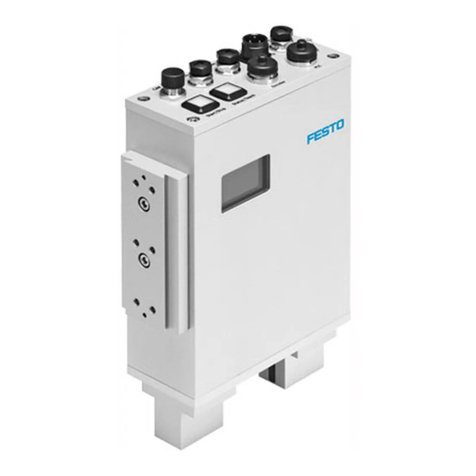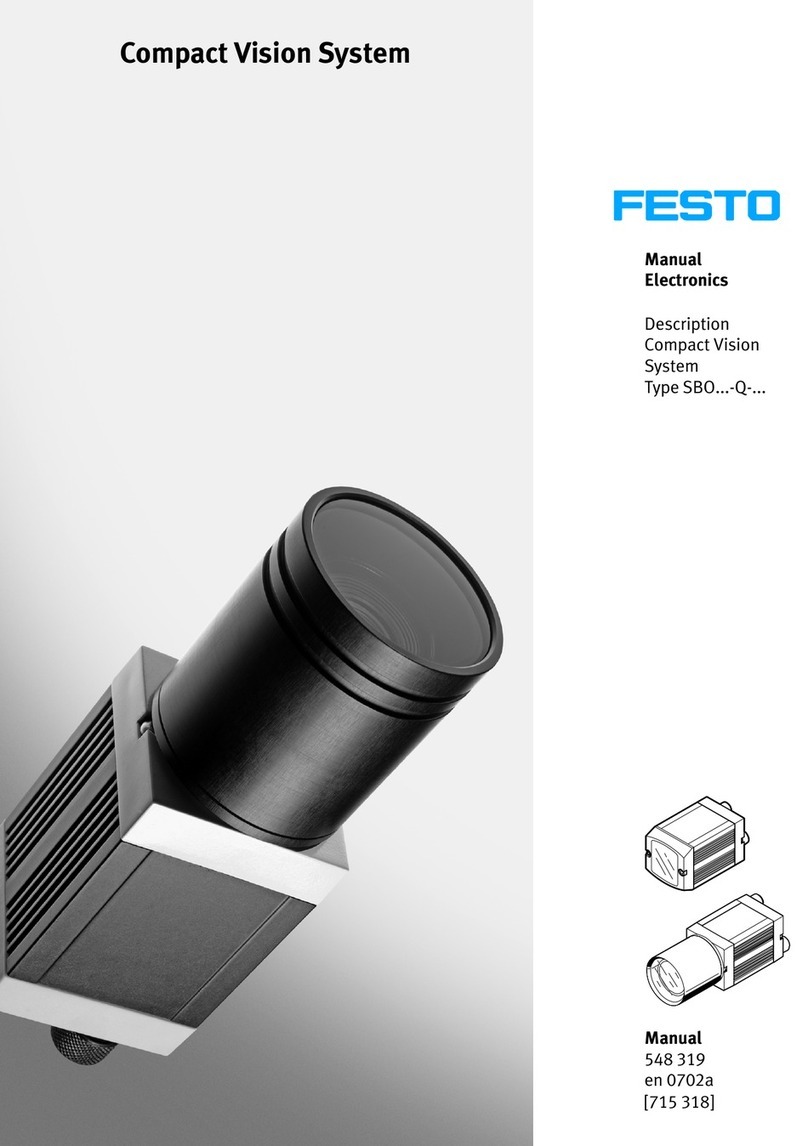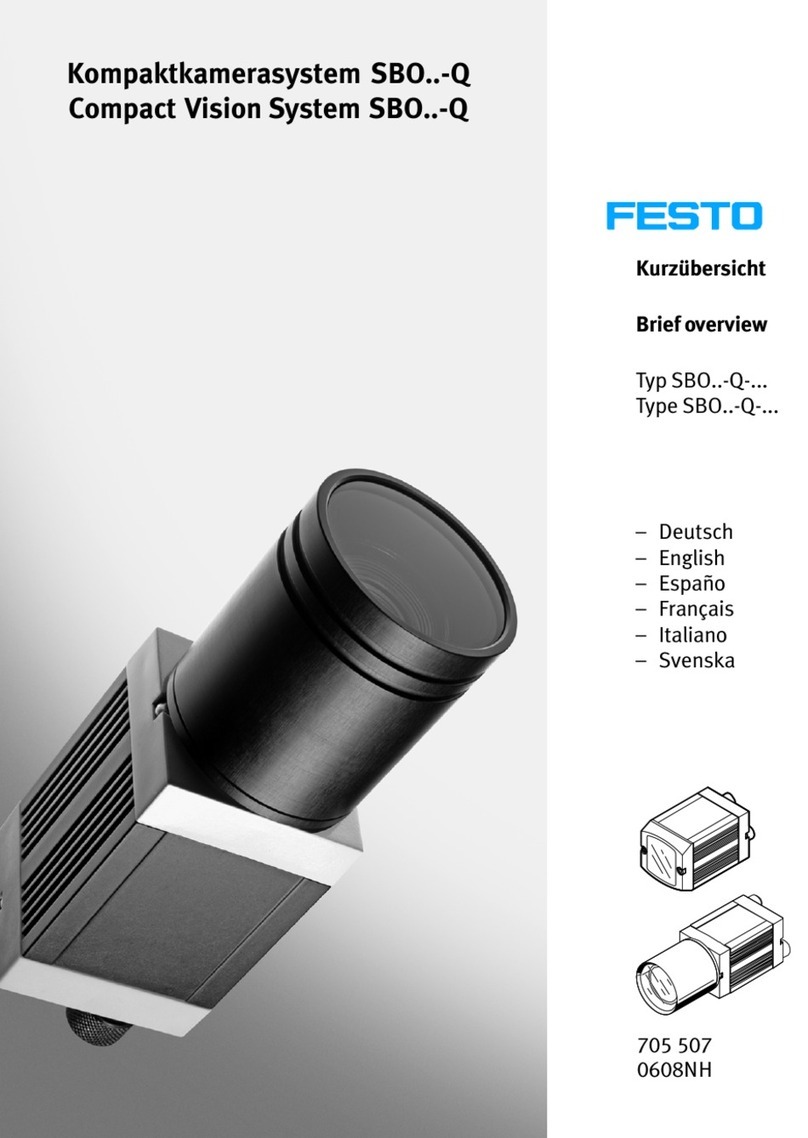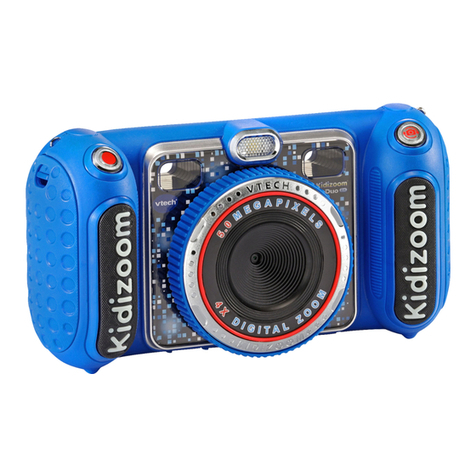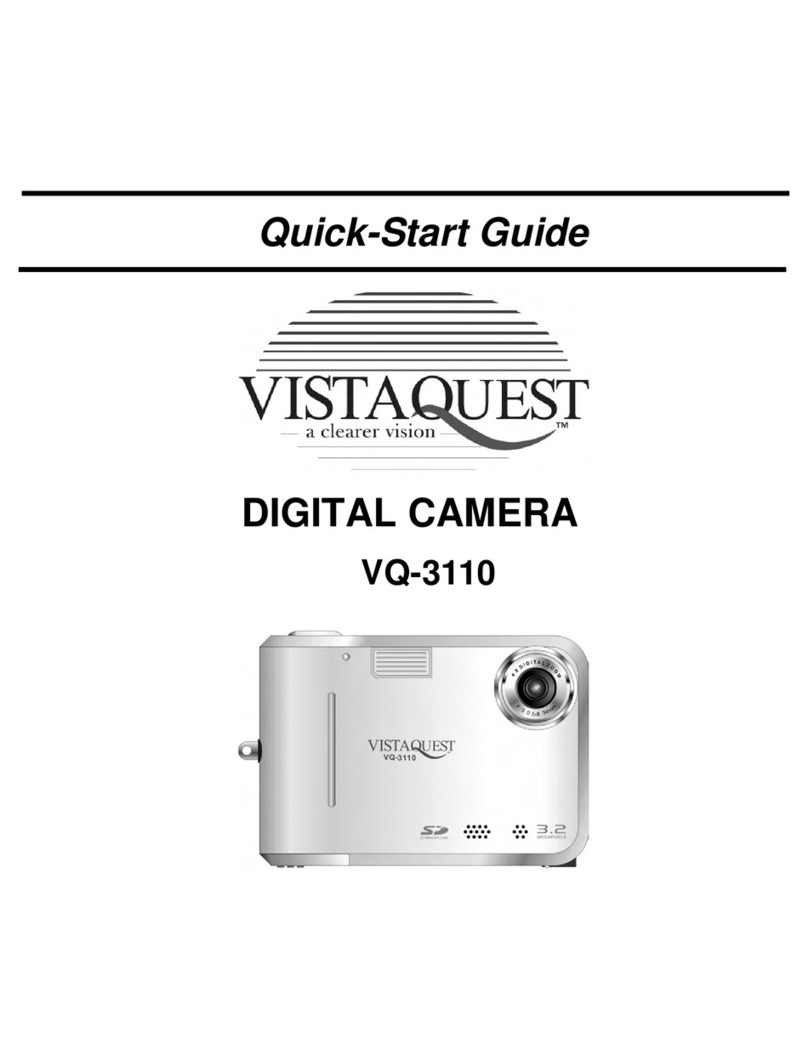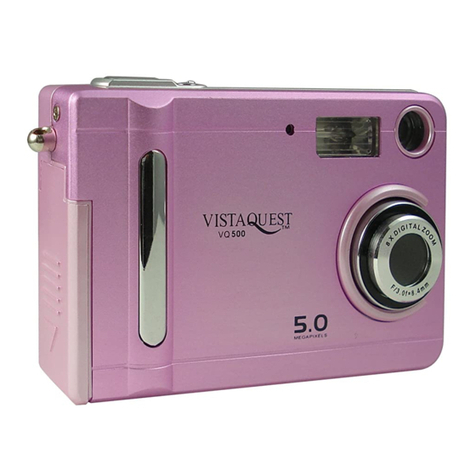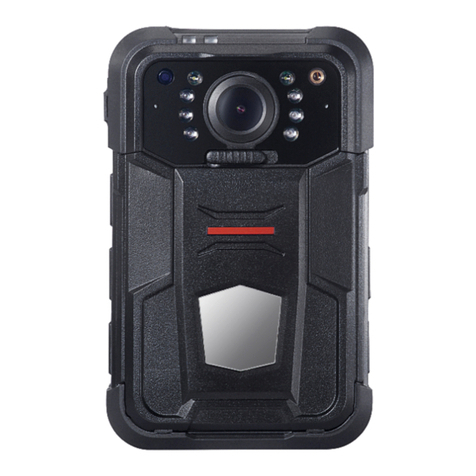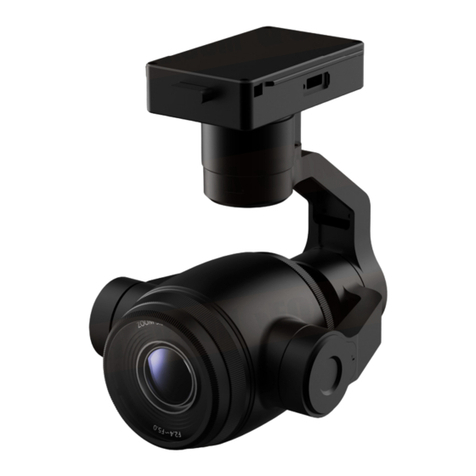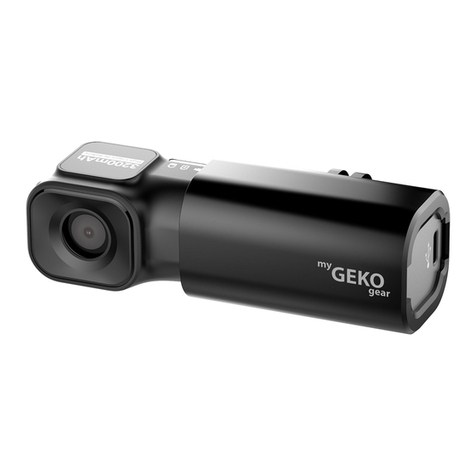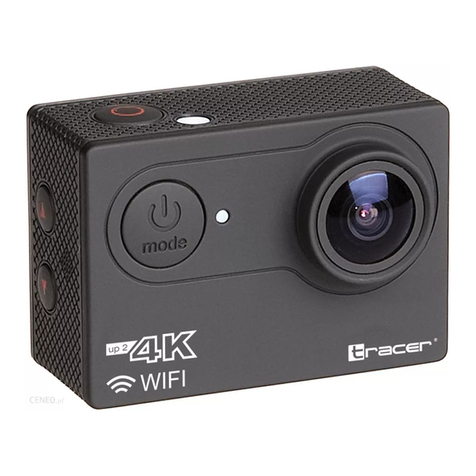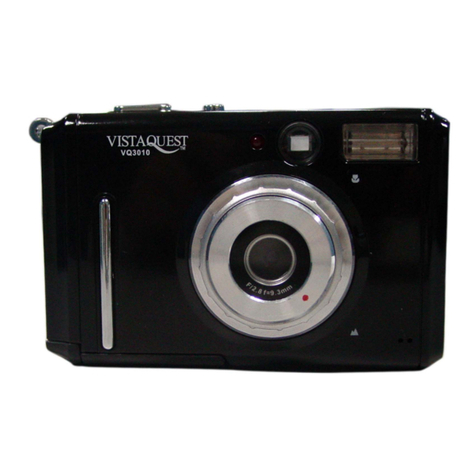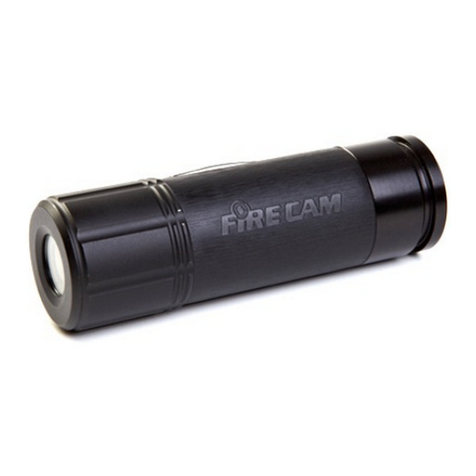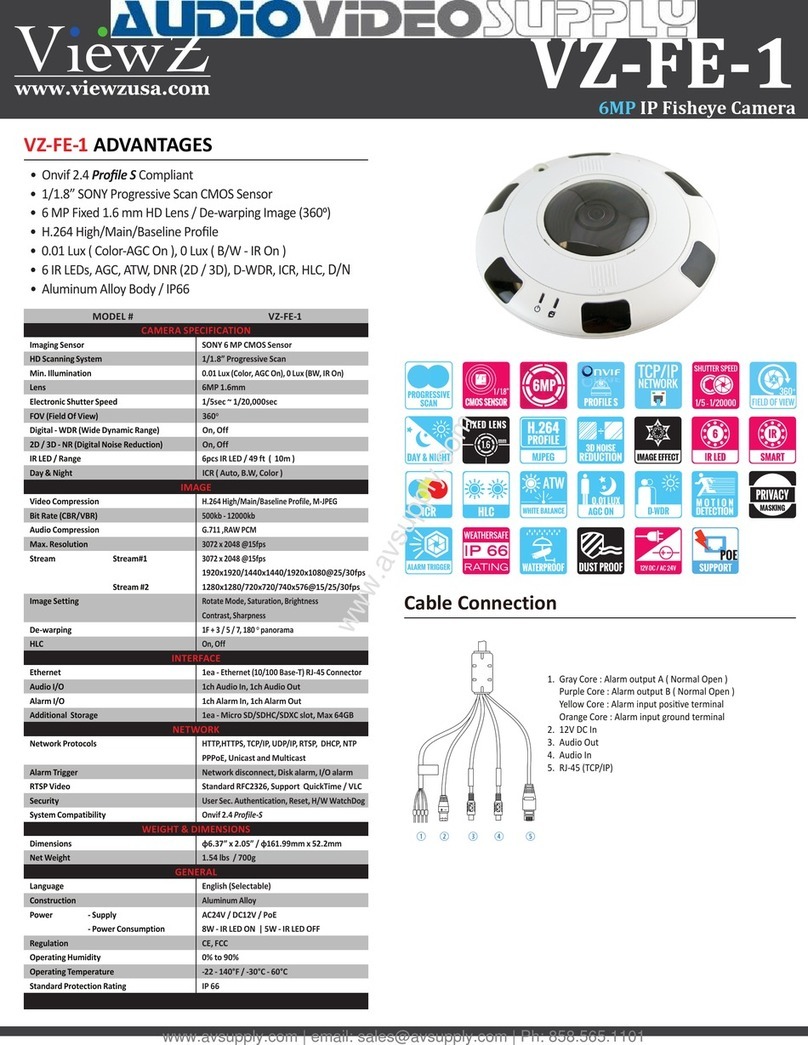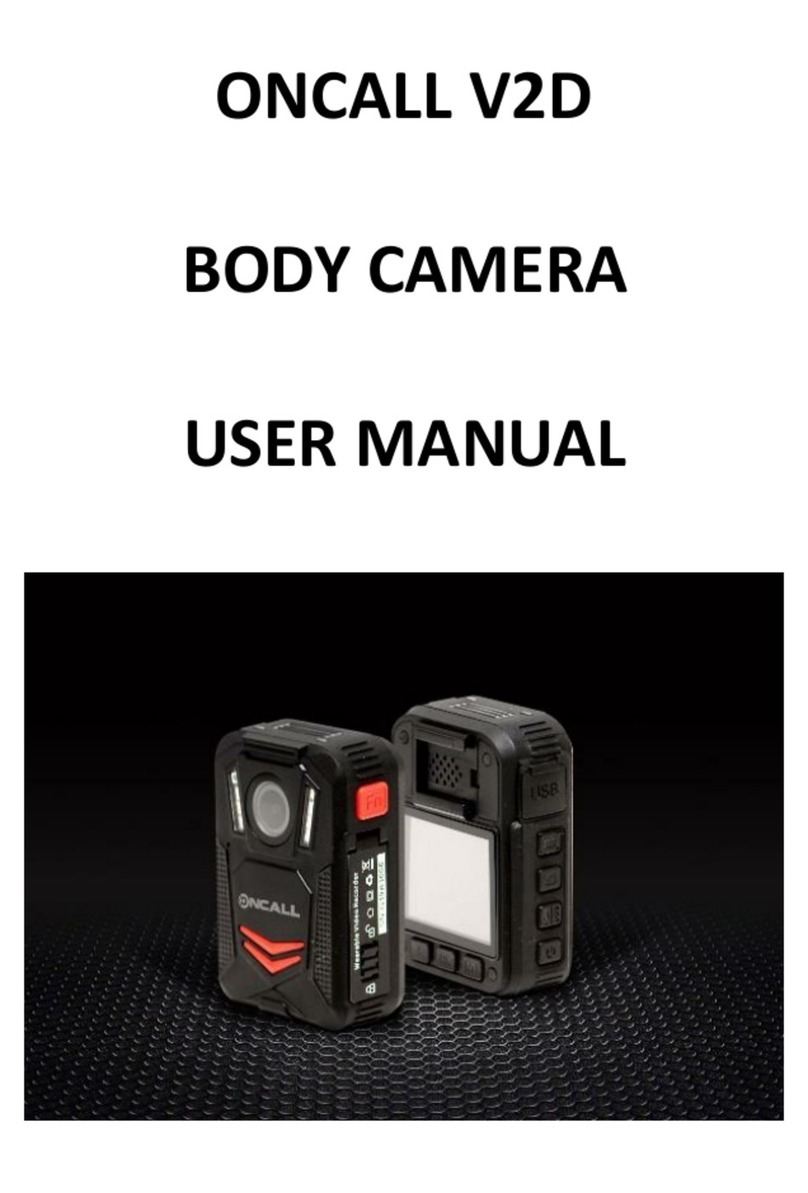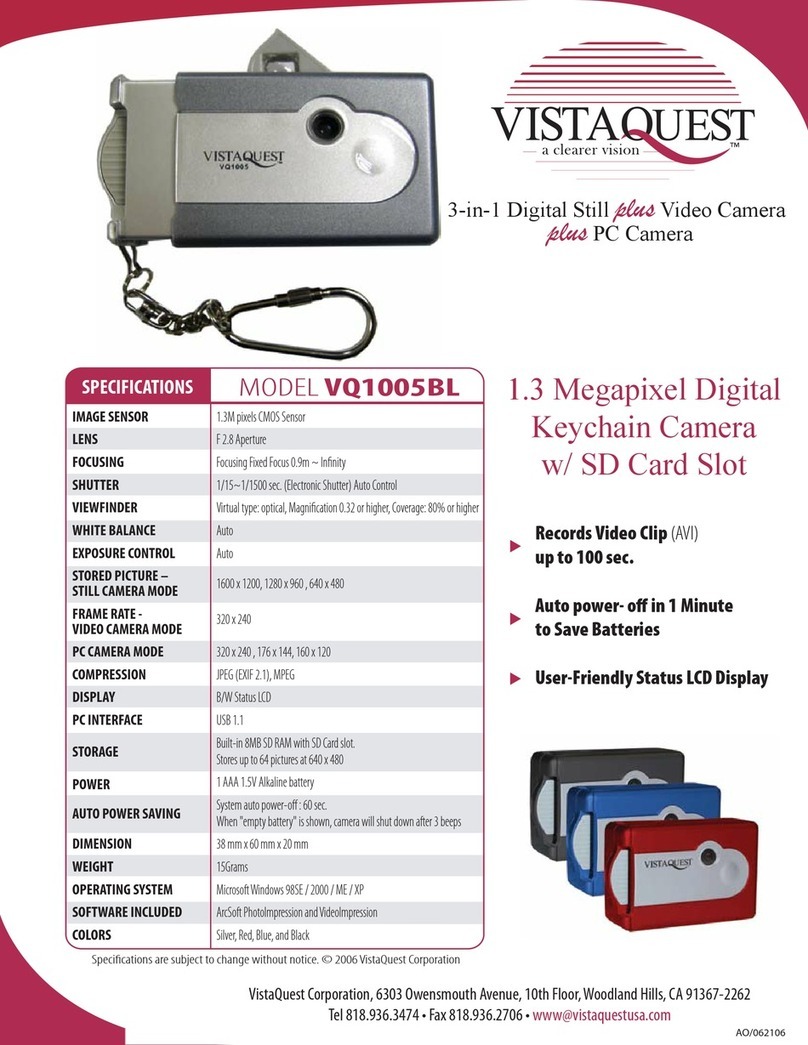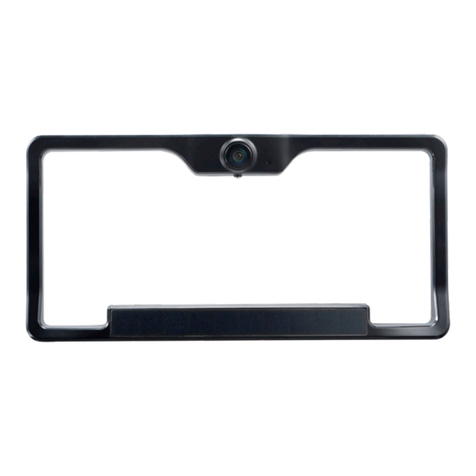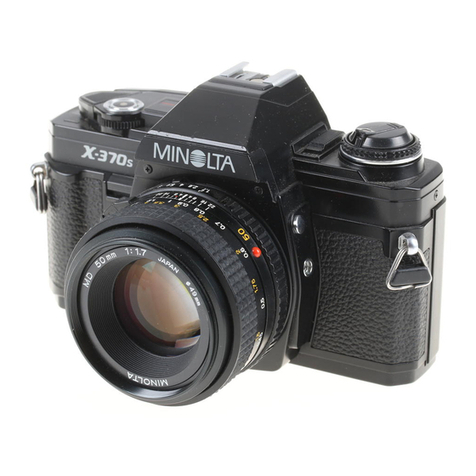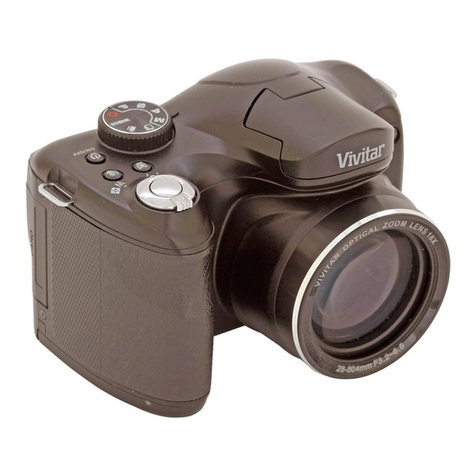Festo SBRD Series User manual

Translation of the original instructions
1 About this document
1.1 Further applicable documents
All available documents for the product èwww.festo.com/pk.
2 Safety
2.1 General safety instructions
– Only use the product in original status without unauthorised modifications.
– Only use the product if it is in perfect technical condition.
– Observe labelling on the product.
– Take into consideration the ambient conditions at the location of use.
– Before working on the product, switch off the power supply and secure it
against being switched on again. Only switch on the power supply when the
product has been assembled and installation work is complete.
– Assembly and installation should only be carried out by qualified personnel.
– In the commissioning and programming, the safety regulations in this
description and in the documentation for the controller used as well as the
other components must always be observed.
– Comply with the handling specifications for electrostatically sensitive devices.
Electrostatic charge can damage the internal electronics.
– Do not connect or disconnect plug connector when powered.
– This product can generate high frequency interference, which may make it
necessary to implement interference suppression measures in residential
areas.
2.2 Intended use
The SBRD camera system is intended for installation in a machine or automated
system.
The SBRD camera system may only be used as follows:
– As intended
When connected with commercially available components such as sensors and
actuators, the specified limits for pressures, temperatures, electrical data,
torques etc. must be observedè 10 Technical data. The SBRD camera system is
exclusively intended for use in an industrial environment. Measures for interfer
ence suppression may be required in residential areas.
2.3 Training of skilled personnel
– Assembly and installation should only be carried out by qualified personnel.
– Commissioning should only be carried out by qualified personnel.
– The qualified personnel must be familiar with installation of electrical control
systems.
2.4 Approvals
Standards and test values, which the product must comply with and fulfil, can be
found in the section Technical dataè 10 Technical data. The productrelevant EU
directives and standards are listed in the declaration of conformity
èwww.festo.com/sp.
The product fulfils the requirements of EU directives and comes with the CE mark
ing. .
3 Further information
– Accessories èwww.festo.com/catalogue.
– Spare parts èwww.festo.com/spareparts.
– All available documents for the product and current versions of the firmware
and CCS software èwww.festo.com/sp.
4 Functioning and design of the SBRD camera system
Components
The SBRD camera system consists of the following components:
– Machine Vision controller SBRDQ
– SBPB camera heads
– NEBC connecting cables
Areas of application
The SBRD camera system can be used for the following tasks:
– Position and orientation detection
– Pick and Place
– Quality inspection
– Measurement
– Reading of barcodes and data matrix codes (1D and 2D codes)
– Reading of plain text (OCR)
4.1 Product variants
SBRD-Q controller
The SBRDQ controller is a compact evaluation unit with degree of protec
tionIP20. Up to 2cameras of model range SBPB can be connected to the device.
Fig. 1 SBRDQ controller
Overview of functions and interfaces
The 24 V inputs and outputs of the SBRDQ controller can be provided with virtu
ally any allocation of functions. They are configured using the CCS (Camera Con
figuration Studio) software tool.
– 24 V IOs: 10 inputs + 2 inputs (pullup resistor) / 8 outputs
– Output: 2x32bit ARM CortexA9 CPU
– Memory: 1 GB
– Dimensions: 130 mmx106 mmx60 mm
– Functionality: Machine Vision
– Communication: Ethernet 10/100/1000 Mbit/s
– Interfaces: Pluggable connectors
– Camera interface: 2x USBcompatible for connection with camera head
– LED: Status, IOs, Ethernet
– SD memory card slot
Logical status of inputs/outputs
Some I/O signals can be configured with the CCS software èconfigure Job Navig
ator step 6 I/O, select digital inputs or digital outputs.
Note the difference between the electrical level (highactive, lowactive) and the
logical status (1 signal, 0 signal) of an input or output.
All signals are active in the highactive factory setting and can be inverted in their
logic in the CCS software. They then become lowactive signals. All timing dia
grams and displays assume this highactive setting. An inversion of signals should
only be performed in exceptional circumstances by experienced users.
SBPB camera head
The purpose of the SBPB camera heads is to record the image for the SBRD cam
era system. The camera heads are optimised for use in the industrial environ
ment. The product is available in various resolutions with image sensors in colour
and monochrome variants.
Fig. 2
8078000
SBRD
Camera system
8078000
201802
[8078002]
Instructions| Operating
Festo AG & Co. KG
Ruiter Straße 82
73734 Esslingen
Germany
+49 711 3470
www.festo.com

Fig. 3 SBPB camera head
Feature Code Value
Camera heads [SBPB] Series B
[R2] 1280x1024
[R5] 1600x1200
Resolution
[R9] 2456x2054
[B] MonochromeImage sensor
[C] Colour
Communication interface [U3] USBcompatible
Digital inputs [1E] 1 input
Digital outputs [1A] 1 output
Lens mount [C] C mount
Tab. 1 Order code
NEBC connecting cables
The NEBC connecting cable is a cable with two different connection sides (type A,
type B 3.0 micro, each USBcompatible) for connecting the SBRD controller with
the SBPB camera heads.
Fig. 4 NEBC connecting cables
Commissioning
The corresponding software packages are used for commissioning and
operationè 4.1 Product variants.
Software packages
The CCS (Camera Configuration Studio) software and the FFT (Festo Field Device
Tool) are provided for commissioning and operation.
The minimum requirements that have to be fulfilled by the PC in connection with
the software packages are described in the help section for the respective soft
ware package.
The CCS software provides the following functions:
Theme Function
Configuration and commissioning, creating jobs – Specifying the signal behaviour
– Specifying the cameras and camera proper
ties
– Specifying the evaluation and output func
tions
– Specifying tools and tool properties
Analysis – Display of evaluated parts, live images,
statistics and handling of jobs
Diagnostics – Display of device properties
– Display of errors
Service – Documentation of a system
Tab. 2 Functions of the CCS software
The FFT software provides the following functions:
Theme Function
Basic configuration and commissioning – Changing the network settings of the device
(IP address, gateway, password, etc.)
– Transfer of firmware to the controller
Tab. 3 Functions of the FFT software
5 Assembly of the camera system
Assembly of the SBRD-Q controller
The SBRDQ controller can be mounted as follows:
– On a Hrail
– With two M4 screws over the mounting holes in the housing.
Position the SBRDQ controller so that the ventilation grilles are positioned hori
zontally. This ensures an optimum air flow through the device from the bottom
upwards.
Mounting the SBPB camera head
– There is a threaded hole underneath the SBPB camera head. Only use the
SBAMC11CP mounting kit è Tab. 4 Adapter kits for mounting.
– Only use the screws and toothed discs provided. èThe toothed discs must
be used also. Pay attention to the threaded length.
– Mount the camera head with the aid of the adapter BS so that it fits properly
and points toward the test piece without obstruction
è Tab. 4 Adapter kits for mounting.
– Ensure that the distance between the camera and the test piece is appropri
ate.
– Mount the camera head on a cool surface in high ambient temperatures.
– A functional earthing connection is provided on the mounting plate of the
SBAM camera. Connect this to earth potential with low impedance.
Mounting the NEBC connecting cable
– On the controller side, the NEBC connecting cable is inserted into the X7 or X9
connection.
– The NEBC connecting cable is inserted at the back of the camera and secured
against falling out with appropriate locking screws.
– Ensure permanent strain relief on both sides.
– Do not use narrow cable binders for mounting, as this could damage the
internal design of the cable.
– Make sure the pushin connector on the SBRDQ controller and on the SBPB
camera head cannot become unplugged or loose (e.g. through vibration).
The following adapter kits are provided for mounting of the respective compon
ents:
Type Designation Description
SBAMC11CP Mounting Adapter kit for camera on dove
tail mounting
SBOAHMSV39 Adapter BS Adapter kit for assembly with
screwon dovetail plate (dove
tail plate included in adapter
kit)
SBOAHMSV40 Adapter BS Adapter kit for assembly on
dovetail plate, e.g. HMSV11
plate (not included in adapter
kit).
SBOAHMSV41 Adapter BS Adapter kit for assembly with
internal thread ¼20 UNC for
mounting on commercial
photo/video tripods.
SBAMC6A2AF Swivel mounting Swivel and adjustable attach
ment for assembly of camera
heads with the aid of a dovetail
system
Tab. 4 Adapter kits for mounting
5.1 Dimensions of camera system
SBRD-Q controller
Fig. 5 SBRDQ controller
SBPB camera head
1Lens not included in the scope of
delivery
2Optical axis
Fig. 6 SBPB camera head

5.2 Mounting accessories
Select the corresponding accessories from the catalogue
èwww.festo.com/catalogue.
6 Installation
General instructions on installation
NOTICE!
Malfunction due to electromagnetic interference.
• Connect the FE connections to the earth potential with low impedance.
• Connect the Hrail to the earth potential with low impedance.
Long signal lines reduce the resistance to interference.
• The cable lengths are shown in the following table.
Cable type Permissible cable lengths
Signal lines Max. 30 m
NEBC connecting cable Max. 5 m
Ethernet > 30 m
Tab. 5 Maximum permissible cable lengths
6.1 Electrical installation
Selecting the power pack
WARNING!
Risk of injury due to electric shock.
• For the electrical power supply, use only PELV circuits in accordance with IEC
602041/EN 602041 (Protective ExtraLow Voltage, PELV).
• Observe the general requirements of IEC 602041/EN 602041 for PELV cir
cuits.
• Only use voltage sources that ensure a reliable electric separation from the
mains network in accordance with IEC 602041/EN 602041.
Protection against electric shock (protection against direct and indirect contact) is
guaranteed in accordance with IEC/DIN EN 602041 by using PELV circuits (elec
trical equipment of machines, general requirements).
WARNING!
Fire risk from overheating
Injury resulting from fire
• The product must be supplied from a single voltage source that meets the
requirements for energylimited circuits or from an energylimited voltage
source (LPS) or from a Class 2 circuit. Observe the IEC 610101/EN 610101.
Simple 24 V transformers with rectifier and capacitor reach output voltages of 28
V and more at reduced loads. Proper operation is only ensured if the permissible
operating voltage range is not exceeded è 10.1 Technical data: mechanical. This
product can generate high frequency interference, which may make it necessary
to implement interference suppression measures in residential areas.
SBRD-Q controller
1Status LEDs
2X9 camera interface
3X10 reserved
4Memory card slot
5X5 power supply for outputs
6X4 digital outputs X4.0 X4.7
7X3 digital inputs X3.0 X3.5
8X2 digital inputs (with integrated
pullup) X2.2, X2.3 of related GND:
X2.0, X2.1 digital inputs X2.4 X2.7
9X1 power supply for controller
10 X8 Ethernet interface
11 X7 camera interface
Fig. 7 SBRDQ controller
The following connection options are available: è 7 Commissioning.
Connecting the operating voltage supply and the I/Os
NOTICE!
• Comply with the permissible operating voltage range to prevent damage to
components.
The power supply is fed to the X1 connection via the 4pin plug with the label 24 V
DC.
The following components are supplied via this connection with + 24 V DC:
– Internal electronics of the camera system
– Inputs
The X4 outputs are supplied via the 2pin plug X5 with+ 24 V DC.
NOTICE!
Malfunction due to electromagnetic interference.
• Connect screening to the connection for functional earth FE.
• Connect plug X1 with low impedance to the earth potential.
The function and the functioning behaviour of the I/O are configured with the CCS
software and saved in the respective job. For differentiation purposes, the func
tioning behaviour of the I/O is in the various evaluation modes
è 7 Commissioning.
Observe the following:
– Comply with the tolerance 24 V DC ± 10 %.
– Connect the FE connection of the plug X1 with low impedance to earth poten
tial.
– The power may not exceed 450 mA per output.
– Connect the cable screening with low impedance to earth potential.
– When using the inputs with integrated pullup resistance (X2.0 and X2.1), use
screened cables. Connect the screening at both ends to earth potential with
low impedance. May. length of unscreened cable 100 mm.
– Inputs and outputs are galvanically separated:
– Outputs are supplied via X5, potential in relation to GND_IO
– Inputs are supplied via X1, potential in relation to GND
Connecting the Ethernet interface
Unauthorised access to the camera system can cause damage or malfunctions.
• Protect your network against unauthorised access, e.g. with a firewall.
With an active connection to the systems in the network, large amounts of data
can be transmitted, depending on the mode of operation. This places a consider
able burden on the network between the PC and system. A direct connection is
therefore preferable.
• Provide the corresponding bandwidth and an optimum network structure.
• Adhere to the system requirements.
A connection to the PC must be provided via Ethernet for commissioning and con
figuration of the camera system.

Connecting the camera
– Only the cables and accessories approved by Festo may be used
è 4.1 Product variants, è 6 Installation.
– Do not install any other accessories (angle adapters, extension cables, hub,
etc.) between the camera and the controller.
7 Commissioning
Notes on commissioning
The assembly and installation of the device should be completed before commis
sioning.
The steps for commissioning are usually carried out in the following sequence:
1. Change the network settings or the firmware of the device with the FFT soft
ware.
2. Perform the commissioning and configuration of a job with the CCS software
èHelp on CCS.
The commissioning and configuration of a job is usually carried out in the follow
ing sequence:
1. Select the camera used in the job.
2. Configure the job parameters, e.g. evaluation mode.
3. Configure the camera used, e.g. image range, coordinate transformation.
4. Take pictures.
5. Configure the test (image preprocessing and object recognition/test).
6. Configure the digital and protocolbased I/O.
7. Test run and diagnosis
Select the evaluation mode
The evaluation mode determines when a picture of a test piece is taken, pro
cessed and tested and when the results are output.
The selection of the evaluation mode specifies how the device responds to input
signals or when the test results are sent to the outputs.
The following evaluation modes are selected via the job parameters evaluation
mode in the CCS software èSetting in job navigator step 1: Setup: In the Job
parameters window, evaluation section:
– Triggered: single frame capture and test on each valid trigger signal.
– Free run: continuous image recording and test (no fixed frame rate) as long as
the trigger signal is provided.
The selection of the evaluation mode depends on the respective application,
especially on:
– the test piece rate and the test piece flow
– the test piece (individual lot or continuous)
– the interaction with a higherorder controller
8 Cleaning and maintenance
NOTICE!
Dirty and scratched lens
A dirty and scratched lens can result in optical errors.
• Do not scratch the lens.
• Do not use any abrasive cleaning agents.
– Switch off the power supply for cleaning.
– In the event of dirt or deposits, clean the lens with a soft cloth and a gentle
cleaning agent.
– Cleaning agents include all nonabrasive media.
9 Diagnostics and error handling
General diagnostics options
The following options are available for diagnostics:
– Software CCS can display the operating states and error messages of the
camera systems used èHelp on CCS.
– Run LED, Error LED, Net LED, Mod LED, Speed LEDs and Link/Traffic LEDs on
the connection side of the SBRDQ controller (è SBRDQ controller) provide
the information given in the following section.
Status indication
The Status LEDs provide the visual display of the operating states.
LED Status Significance/error hand-
ling
LED illu
minates
green
Device is ready for operation. –
LED illu
minated
yellow
Commissioning is ongoing
Job switch currently taking place
Wait until the commissioning or
the job switch has been com
pleted.
LED is
off
Unspecified condition, e.g. no power supply Check the power supply to the
electronics
Tab. 6 Run LED
LED Status Significance/error hand-
ling
LED illu
minated
red
Error –
LED is
off
No error –
Tab. 7 Error LED
Net LED: Reserved
Mod LED: Reserved
10 Technical data
10.1 Technical data: mechanical
SBRD-Q controller
Type name code SBRD
Dimensions lengthxwidth
xheight
[mm] 106x130x60
Type of mounting with Hrail
with throughhole for M4 screw
Product weight [g] 315
CE marking (see declaration
of conformity)
in accordance with EU EMC Directive
Power supply cable length [m] < 30
Functional earth, connection M4
Input/output interface
Input/output interface, con
nection type
Plug connector
Number of inputs 12
Digital inputs, permitted
length of connecting cable
[m] <30
Number of outputs 8
Digital outputs, permitted
length of connecting cable
[m] <30
Camera interface
Camera interface, connection
type
2x sockets
Camera interface, connection
technology
USBcompatible 3.0, type A
Note on camera interface Only use cables identified as accessories by Festo
èwww.festo.com/catalogue.
Ethernet interface
Ethernet interface, connec
tion type
Socket
Ethernet interface, number of
pins/wires
8
Immission/Emmission
Storage temperature [°C] –20…+70 °C
Degree of protection IP20
Ambient temperature [°C] –5…+50 °C
Relative humidity 95 %
Immunity to interference Industrial environment as per EN 6100062:2005
Interference emission Industrial environment as per EN 6100064:2007
+A1:2011
Shock resistance Severity level 2 as per EN 60068 and FN 942017
Vibration resistance Severity level 2 as per EN 60068 and FN 942017
Continuous shock resistance Severity level 2 as per EN 60068 and FN 942017
Corrosion resistance class [CRC] 0
LABS criterion LABSfree as per FN 942010
Materials/other
Information on housing
materials
PA6 reinforced, PA6GB20, GF10/LGK2
Information on materials RoHScompliant
Tab. 8 Technical data, mechanical: SBRDQ controller
SBPB camera head SBPB-R2 SBPB-R5 SBPB-R9
Type name code SBPB
Lens attachment C mount
Field of view Depending on the selected lens
Dimensions length xwidth
xheight
29x29x49
Type of mounting With mounting kit
Product weight [g] 52
CE marking (see declaration
of conformity)
in accordance with EU EMC Directive
Interface, USBcompatible

SBPB camera head SBPB-R2 SBPB-R5 SBPB-R9
Interface, USBcompatible,
connection type
Socket
Interface, USBcompatible,
type of mounting
Screwtype lock
Interface USBcompatible,
number of pins/wires
10
Input/output interface
Input/output interface, func
tion
Without function
Input/output interface, con
nection type
Socket
Input/out interface, number
of pins / wires
8
Input/output interface, type
of mounting
Screwtype lock
Number of digital inputs 1
Number of digital outputs 1
Immission/Emmission
Storage temperature [°C] –20…+60
Degree of protection IP30
Note on degree of protection In assembled state
Ambient temperature [°C] 0…+40
Relative humidity [%] 20…80
Immunity to interference EN 6100062:2005
Interference emission EN 6100063:2007 +A1:2011
Shock resistance Shock test severity level 2 to FN/EN, FN 9420175 and
EN 60068227
Vibration resistance Transparency and operational test severity level 2 to
FN/EN as per EN 6006826
Corrosion resistance class
(CRC)
2
LABS criterion LABSfree as per FN 942010
Electronics
Working distance Depending on the selected lens
Sensor size [inch] 1/1.8 2/3
Aspect ratio 5:4 4:3 5:4
Length of exposure 9 µs…2000 ms 20 µs…10000
ms
27 µs…999 ms
Pixel size [mm] 0.0053 0.0045 0.00345
Materials/other
Information on housing
materials
Anodised wrought aluminium alloy
Note on materials RoHScompliant
Ambient conditions Dry, screened from external light sources, cleanest pos
sible ambient air
Tab. 9 Technical data, mechanic: SBPB camera head
NEBC connecting cable
Type name code NEBC
Cable name Without label holder
Product weight [g] 282
Electrical connection 1
Function Field device side
Design Angular
Connection type Plug connector
Cable outlet Straight
Connection technology USBcompatible 3.0, type B micro
Number of pins/wires 10
Assigned pins/wires 9
Tightening torque [Nm] 0.4
Tightening torque tolerance [%] ±20
Electrical connection 2
Function Controller side
Design Angular
Connection type Plug connector
Cable outlet Straight
Connection technology USBcompatible 3.0, type A
Number of pins/wires 9
Assigned pins/wires 9
Tab. 10 Technical data, mechanic: connecting cable NEBC
10.2 Technical data, electrical
SBRD-Q controller
Protection against direct and
indirect contact
PELV
Nominal operating voltage [V] 24
Permissible voltage fluctu
ations
[%] ±10
Power consumption 24 V [W] 20
Current consumption with
loadfree outputs
[mA] <300 nominal at 24 VDC
Input/output interface
Input/output interface, func
tion
2 x digital input with integrated pullup resistor, 10 x
digital input, 8 x digital output, power supply, ground
Note on inputs 2 of the 12 inputs with integrated pullup resistor
Switching level [V] 0 signal:≤1, 1 signal:≤10
Note on switching level1) [V] 0 signal:≤=1
1 signal:≥=8
Switching logic inputs PNP (positive switching)
Digital inputs, status display LED
Nominal operating voltage
DC, load
[V] 24
Digital outputs, output cur
rent
[mA] 450
Switching logic at outputs PNP (positive switching)
Digital outputs, contact Transistor
Digital outputs, short circuit
current rating
Yes
Digital outputs, status dis
play
LED
Camera interface
Camera interface, function Only communication with camera
Ethernet interface
Ethernet interface, protocol TCP/IP
Ethernet interface, function Diagnostics, programming
Ethernet interface, connec
tion technology
RJ45
Ethernet interface, transmis
sion speed
[MBit/s] 10/100/1000
Fieldbus interface
Fieldbus interface, function Without function
Card slot
Memory card microSD
Memory capacity [GB] <=32
File system FAT32
1) For integrated pullup resistor
Tab. 11 Technical data, electrical: SBRDQ controller
SBPB camera head SBPB-R2 SBPB-R5 SBPB-R9
Sensor resolution [pixels] 1280x1024
(SXGA)
1600x1200
(UXGA)
2456x2054
(5Mpix)
Interface, USBcompatible
Interface USBcompatible,
function
Power supply, communication
Interface USBcompatible,
connection technology
USB 3.0, type B micro
Nominal operating voltage [V] 5
Permissible voltage fluctu
ations
% ±5
Max. current consumption
with loadfree outputs
[mA] 300 300 600
Electrical power consumption [W] 1.3…1.5 2.3…3
Input/output interface
Input/output interface, con
nection technology
HR25, Hirose HR257TR8PA (73)
Switching input Optocoupler
Switching level 0 signal:≤=1 V, 1 signal:≤=5 V…24 V
Min. input resistance [kOhm] 3
Voltage range [V] Max. 30
Trigger pulse width [µs] Min. 10
Trigger edge steepness [V/ms] Min. 35
Breakdown voltage [V] Max. 50
Input current [mA] Max. 10
Switching output Optocoupler
Max. output current (short
term)
[mA] 500
Output current, continuous [mA] 150
Output voltage [V] Max. 30

SBPB camera head SBPB-R2 SBPB-R5 SBPB-R9
Breakdown voltage [V] Max. 50
Transistor power loss [mW] Max. 125
Short circuit protection No
Electronics
Sensor types SBPB…B monochrome, SBPB…C colour
Sensor type CMOS GlobalShutter
Frame rate (full image) [fps] 60 36
Binning factor 2 –
Subsampling factor – 2, 4, 6, 8, 16
Tab. 12 Technical data, electrical: SBPB camera head
Table of contents
Other Festo Digital Camera manuals
